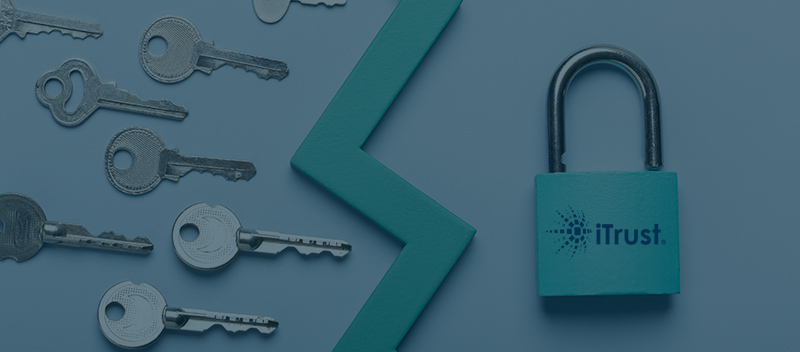Blog Information Security Audit Checklist
Information Security Audit Checklist

Having a robust cybersecurity infrastructure isn’t just a luxury—it’s a necessity. Because cyber risks are ever-changing, it takes planning and awareness to stay ahead. That’s where an information security audit checklist comes into play.
Through this guide you will receive all the necessary information to create an exhaustive checklist to assess the resilience of your company against potential cyber-attacks. Together, let’s ensure that your defenses are robust and effective.
Planning Against Breaches
Planning is essential for safeguarding your business from online attacks. To develop a strong defensive plan, you must consider the larger picture and pose the appropriate questions.
A. Assessing the Big Picture
Before diving into specifics, take a step back and assess your overall cybersecurity posture. Here are some areas to focus on:
- Current Cybersecurity Measures: What tools and protocols do you currently have in place?
- Potential Vulnerabilities: Where might there be gaps or weaknesses in your defenses?
- Threat Landscape: What types of threats are most relevant to your industry?
B. Key Questions to Consider
To build a robust plan, you’ll need to delve deeper by asking key questions like:
- What are our most critical assets? Understanding what you need to protect is the first step in planning.
- Who has access to these assets? Identifying who has access helps in managing permissions and monitoring potential internal threats.
- What are our response protocols in case of a breach? Having a clear, actionable plan can make all the difference when reacting to a threat.
- Are we compliant with industry standards and regulations? Ensuring compliance can protect you from legal repercussions and enhance your security posture.
You may develop a more thorough and successful cybersecurity plan by taking the time to carefully evaluate these areas.
For more on our Cybersecurity Risk Assessments services, Click Here
Threat Types
Understanding the various threats your organization faces is crucial in fortifying your cybersecurity defenses. Let’s break it down into two main categories: external and internal threats.
A. External Threats
These are threats that originate outside your organization. They’re often the most talked about, and for good reason.
- Cybercriminals: These individuals or groups are motivated by financial gain. They use tactics like ransomware and hacking to breach your systems and steal valuable data.
- Nation-States and Spies: Sometimes, cyber threats come from state-sponsored actors looking to gather intelligence or disrupt operations. These attacks are usually sophisticated and targeted.
- Social Engineering and Phishing: These methods exploit human psychology rather than technical vulnerabilities. Attackers trick individuals into giving up sensitive information or access credentials.
B. Internal Threats
While external threats get a lot of attention, internal threats can be just as damaging—and they often come from people you already trust.
- Disgruntled Employees: Employees who feel wronged or unhappy can pose significant risks. They might misuse their access to cause harm or leak sensitive information.
- Former Employees with Access: Sometimes, former employees retain access to systems even after they’ve left the company. This oversight can lead to unauthorized data access or sabotage.
- Poor Password Management: Weak or reused passwords make it easy for attackers to gain access. Ensuring strong password policies can mitigate this risk.
- Unauthorized Software and Networks: Employees sometimes install software or connect to networks without approval, creating vulnerabilities that can be exploited.
By understanding and addressing both external and internal threats, you can create a more comprehensive cybersecurity strategy that protects your organization from all angles.
Cyber Security Checklist
Creating a comprehensive cybersecurity checklist is essential for ensuring your organization remains protected against various threats. Let’s break down the key components you should include in your checklist.
A. Attack Detection and Prevention
Being proactive is crucial when it comes to cybersecurity. Here are some steps to consider:
- Intrusion Detection Systems (IDS): Implement systems that monitor your network for any suspicious activity.
- Regular Software Updates: Make sure all software and systems are updated with the latest security patches.
- Antivirus and Anti-Malware Tools: Use reliable antivirus programs to detect and remove malicious software.
B. Network and Access Control
Controlling who has access to your network and systems is fundamental for maintaining security.
- Firewalls: Set up robust firewalls to protect your network from unauthorized access.
- Role-Based Access Control (RBAC): Limit access based on the user’s role within the organization. Only give permissions necessary for their job.
- Virtual Private Networks (VPN): Use VPNs to secure remote access to your network.
C. Incident Response Team
Having a dedicated team ready to respond to incidents can make all the difference.
- Defined Roles and Responsibilities: Clearly outline each team member’s role during an incident.
- Incident Response Plan: Develop and regularly update a plan that details steps to take during a cyber attack.
- Regular Drills: Conduct practice drills to ensure the team is prepared for real-world scenarios.
D. Cloud Security Providers
As more data moves to the cloud, ensuring its security is paramount.
- Trusted Providers: Choose reputable cloud service providers with strong security measures.
- Data Encryption: Ensure data is encrypted both in transit and at rest.
- Access Controls: Implement strict access controls to manage who can access your cloud data.
E. Compliance and Audit Consultants
Staying compliant with industry regulations protects you legally and strengthens your security posture.
- Regular Audits: Schedule regular security audits to identify and address vulnerabilities.
- Compliance Checks: Ensure you’re meeting all regulatory requirements relevant to your industry.
- Consultation: Work with cybersecurity consultants to stay updated on best practices and evolving threats.
By incorporating these elements into your cybersecurity checklist, you’ll be better equipped to protect your organization against a wide range of threats.
Consequences of a Breach
Understanding the myriad consequences of a cyber breach can underscore the importance of robust cybersecurity measures.
1. Service Interruption and Productivity Loss
One of the immediate effects of a cyber breach is the disruption of services. Whether it’s a DDoS attack or ransomware, these breaches can halt operations, leading to significant productivity losses.
2. Regulatory Penalties
If your organization fails to comply with industry regulations, a breach could result in hefty fines. Regulations like GDPR or CCPA impose strict penalties for non-compliance, sometimes reaching millions of dollars.
3. Reputation and Marketing Costs
A breach can seriously damage your organization’s reputation. Customers lose trust, and rebuilding that trust can be an uphill battle. This often translates to increased marketing costs as you work to repair your brand’s image.
4. Customer Notification Costs
In the event of a breach, you are often required by law to notify affected customers. This process can be time-consuming and expensive, involving everything from drafting notification letters to setting up call centers for customer inquiries.
5. Legal Fees
You might face lawsuits from customers, partners, or even shareholders. Legal fees for defense and potential settlements can add up quickly, putting a significant strain on your financial resources.
6. Staffing and Training Costs
Recovering from a breach often requires hiring additional staff, whether it’s temporary help or full-time cybersecurity experts. Additionally, you’ll need to invest in training your current employees to prevent future incidents.
Budgeting for Cyber Security
Investing in cybersecurity is not just a technical necessity—it’s a strategic imperative.
A. Understanding Current Resources and Deficits
Before allocating new funds, it’s essential to understand where you currently stand. Conduct an audit of your existing cybersecurity measures to identify strengths and weaknesses.
-
- Inventory of Current Tools: List all the cybersecurity tools and software you are currently using. Evaluate their effectiveness and check for any overlapping functionalities.
-
- Gap Analysis: Identify areas where your current setup falls short. This could be anything from outdated software to insufficient staff training.
-
- Budget Allocation: Determine how much of your overall budget is already dedicated to cybersecurity and compare this with industry benchmarks.
B. Remediation Tools and Strategies
Once you understand your current resources and deficits, the next step is to outline the tools and strategies needed to address these gaps.
-
- Advanced Threat Detection: Invest in advanced threat detection systems like AI-driven intrusion detection and prevention systems (IDPS).
-
- Employee Training Programs: Allocate funds for regular cybersecurity training for your staff. Human errors are a significant factor in many breaches.
-
- Regular Audits and Updates: Ensure that there is a budget for continual audits and updates of your cybersecurity measures. Staying current with the latest threats is crucial.
C. Partnering with TrustNet Professionals
In-house resources aren’t enough. This is where partnering with experts can provide substantial benefits.
- Consulting Services: TrustNet professionals can offer insights and expertise that may not be available internally. We can help with everything from strategic planning to incident response.
- Managed Security Services: Consider outsourcing some or all of your cybersecurity operations to a trusted managed security service provider (MSSP) like TrustNet. This can be more cost-effective than building an extensive in-house team.
- Regular Reviews and Updates: Work with partners like TrustNet to ensure your cybersecurity measures are up-to-date and aligned with the latest best practices and regulatory requirements.
Committing to Cybersecurity Excellence
To safeguard the future of your whole business it is necessary to have robust cyber security. Partnering with industry leaders like TrustNet gives you access to advanced strategies, tools, and expertise.
With TrustNet, you’re not just getting a service provider—you’re gaining a committed partner dedicated to keeping you on the cutting edge of cybersecurity practices and compliance.
Secure your business with TrustNet’s expert cybersecurity solutions. Talk to our Experts today.




